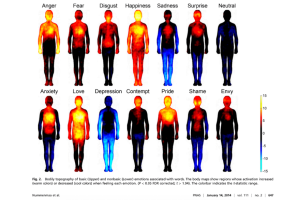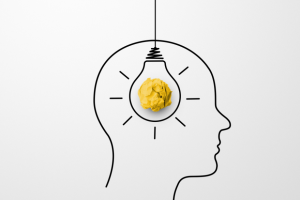Emotional Intelligence is one of the key leadership skills cited by the World Economic Forum for 2030 – and even though it is #6 each of the others is impacted by emotions. This is why it is essential for leadership for the future – particularly in the current climate with the focus on psychosocial safety and wellbeing.
Understanding the science behind feeling
Emotions shape how we move through life. They influence how we connect with others, how we respond to challenges, and how we make decisions. At their core, emotions are simply data – signals that help us understand what is happening in and around us.
This idea is powerful. Rather than seeing emotions as something to control or avoid, we can begin to see them as useful information. Emotions are not good or bad – they are information with purpose.
Why we have emotions
From an evolutionary perspective, emotions help us survive. They draw our attention to important events and guide our actions:
- Fear alerts us to potential threats, both physical and psychological
- Anger indicates we are feeling blocked from something we value
- Sadness invites us to slow down and process loss of something of value
- Happiness indicates we have gained something of value and connects us to others and strengthens relationships
These emotional responses are automatic and often physical. They show up quickly and can influence our behaviour before we’ve even had time to think.
The body keeps the score
Our bodies often feel emotions before our minds have labelled them. A racing heart, a tight jaw, or a lump in the throat are all indicators. Research shows that different emotions activate different areas of the body. For example:
- Sadness may feel like heaviness in the chest or a desire to curl up
- Anger can create heat and tension in the jaw and hands
- Pride expands the chest and lifts the posture
- Anxiety may cause quick, shallow breathing or tightness in the chest
Pausing to notice these physical cues helps us identify what we are feeling. A simple mindset shift – “Oh look, I am having some data. How interesting?” this mindset shift can help us be curious instead of judging.
Words matter: Naming emotions
It is difficult to work with emotions we cannot describe. Many people rely on only a handful of emotional words – happy, sad, and angry. The more we expand our emotional vocabulary, the better we can understand ourselves and others.
Consider the difference between feeling irritated versus overwhelmed or curious versus hopeful. The more precise the language, the more insight we gain. This clarity helps us regulate how we respond and make choices that align with our values.
Try this
Reflect on the last 24 hours.
- What emotions did you experience?
- Where did you feel it in your body?
- Can you name at least three with precision?
When we learn to see emotions as useful data rather than problems to solve, we begin to build the foundation for emotional intelligence. By tuning into the body and developing a richer emotional vocabulary, we gain the tools to respond with greater intention and wisdom.
Explore the tools that help us understand emotion
Building emotional vocabulary takes time, and the right tools can make it easier. The Emotions Cards are a simple and practical way to explore and name how you feel. With over 150 emotion words, they can support reflection, journaling, coaching, or team conversations.
If you are interested in a deeper understanding of how you perceive, express, and manage emotions, the MSCEIT Emotional Intelligence Assessment offers a research-based way to explore your emotional intelligence, along with a personalised debrief to help you apply it in daily life.
Stay tuned, as we explore how the brain processes emotions, and how we can strengthen our capacity to self-regulate and thrive in our next blog.
Explore how our science-backed courses and tools can support you or your team to flourish. Whether you’re starting your journey or deepening your expertise,
Langley Group is here to help you thrive.
👉 Discover our upcoming programmes
📩 Subscribe to our newsletter for practical tips and the latest research
🔗 Contact us to talk about what’s possible for you or your organisation
Let’s create positive change – together.









